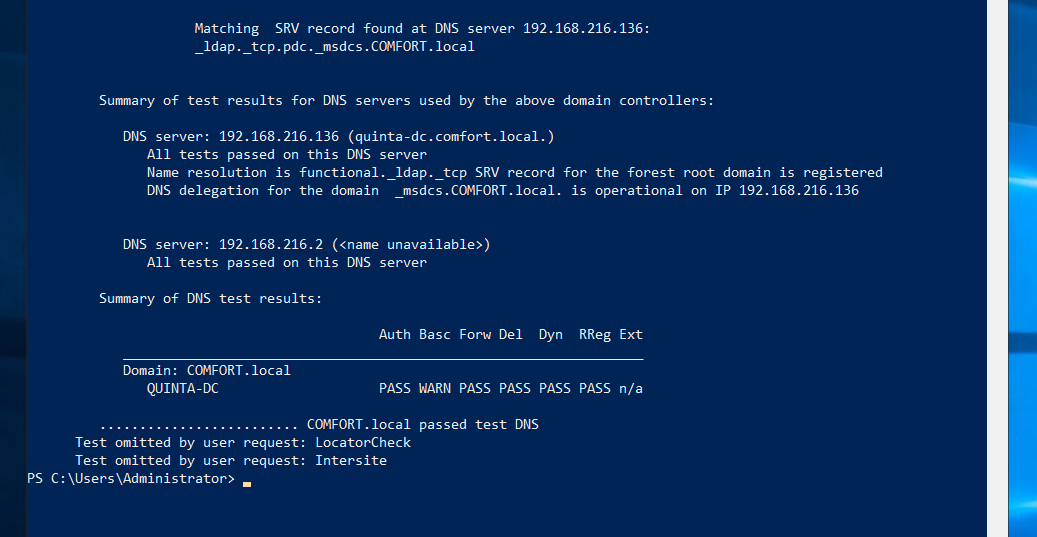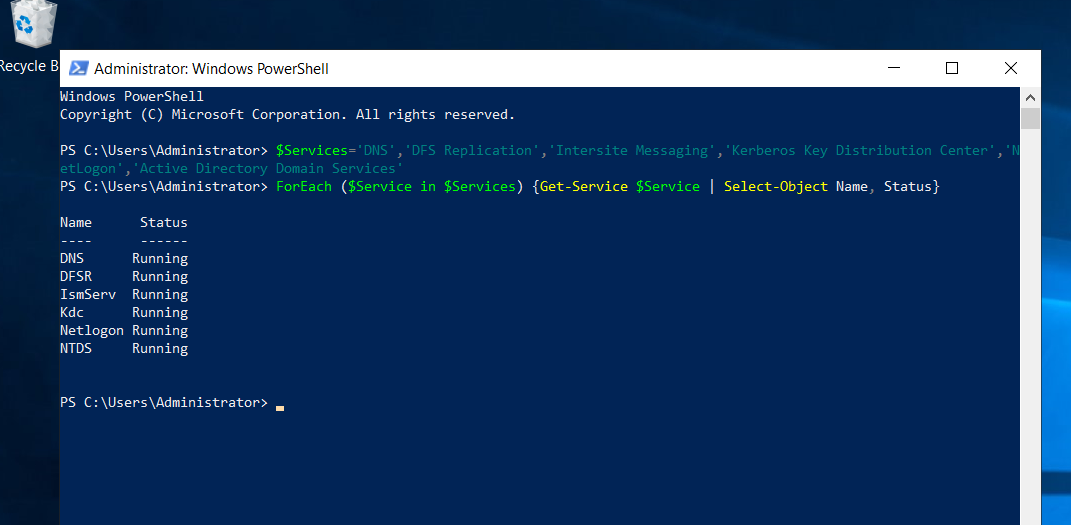Event logs are special files on Windows-based workstations and servers that record system activity. Open the command line type the command below and press enter.

Powershell Check If Iis Is Running On A Remote Server Server Remote Running
Define time for report default is 1 day startDate get-dateAddDays -1 Store successful logon events from security logs with the specified dates and workstationIP in an array.

Check logon server powershell. You can check the logon server with either the command line or PowerShell. Get-ItemProperty MicrosoftPowerShellCoreRegistryHKEY_CURRENT_USERVolatile Environment Select LogonServer. Connect Remotely to Server Run Session get a list of everybody logged in there SNEW-PSSESSION computername FILESERVER ResultsINVOKE-COMMAND Session s scriptblock NET SESSION Select-string USERNAME.
Using PowerShell to audit user logon events PowerShell Deep Dives. Open the PowerShell ISE Run the following script adjusting the timeframe. If it reports MicrosoftAccount they are using their Windows account to sign in instead of domain credentials.
However in some host programs such as the Windows PowerShell console you can prompt. Set objDomain GetObjectLDAProotDSE strDC objDomainGetdnsHostName WscriptEcho Authenticating domain controller. DCs Get-ADDomainController -Filter.
Function get-logonhistory Param stringComputer Read-Host Remote computer name intDays 10 cls Result Write-Host Gathering Event Logs this can take awhile. If so this is the code you want. In search of this same solution I found what I needed under a different question in stackoverflow.
Checking User Logon History in Active Directory Domain with PowerShell. This can be retrieved via PowerShell by using either the Get-CimInstance or Get-WmiObjectcmdlet. If envLOGONSERVER -match MicrosoftAccount Logged on with Windows account.
Path of group policy settings related to event log size. With PowerShell getting the account information for a logged-on user of a Windows machine is easy since the username is readily available using the Win32_ComputerSystemWMI instance. This will display the current Server you are authenticating against.
In the screenshot above I authenticated to the DC2 domain controller. Using PowerShell to audit user logon events. Update for PowerShell users and Uses to find the logon server currently being used by the machine.
The time of the last successful user authentication in an AD domain may be obtained from the user lastLogon attribute it is only updated on the domain controller on which the user is authenticated. Then do something like this. Check the value of the environmental LOGONSERVER variable.
Find DC list from Active Directory. How to Check Logon Server. The next step is not mandatory if there are no firewall settings on domain controllers but because we need to be able to query event logs of different domain controllers and possibly different sites it is a good idea to make sure that Remote Event Log Monitoring is enabled through the firewall.
You can check this by using the IF statement as shown here. There are several different tools to get information about the time of a user logon to an Active Directory domain. Get Computer Last Login Information Using Powershell Function Get-LastLoginInfo requires -RunAsAdministrator.
Its the DC they connect to at logon depending on the route they take and how many there are it can differ between servers Im guessing thats the information youre after. The below one line will return a list of logged on users. The Get-Credential cmdlet prompts the user for a password or a user name and password.
Do you want to know if theres a problem with your Windows-based servers. To trace logonoff history of a user accout please also check this script which can also query the remote computer to get the users logonoff history. Option 1 Using the Command Line.
By default an authentication dialog box appears to prompt the user. If so youd want to do this to find the currently logged on users registry path.

How To Find Which Logon Server You Authenticated To Domain Controller Active Directory Pro

Huge List Of Powershell Commands For Active Directory Office 365 And More Active Directory Pro
A Blog To A System Admin S Passion Powershell Find Ad Users Logon History With Their Logged On Computers
Active Directory Report User Logons Using Powershell And Event Viewer Technet Articles United States English Technet Wiki

Add Modify Verify And Sort Your Powershell Array Scripting Blog Sorting Blog Ads

Powershell Deployment Toolkit With A Gui 4sysops Toolkit Deployment Windows Server

How To Check Active Directory Health Using Powershell Manageengine Adaudit Plus

Using Powershell To Get User Last Logon Date Retrieve Password Users Passwords
How To Find Your Authenticating Domain Controller Cbt Geeks

Powershell Start Up System Restore Remote Assistance
Get Adcomputer Find Computer Details In Active Directory With Powershell Windows Os Hub
How To Find Your Authenticating Domain Controller Cbt Geeks

How To Check Active Directory Health Using Powershell Manageengine Adaudit Plus

How To Find Which Logon Server You Authenticated To Domain Controller Active Directory Pro

How To Install And Import The Powershell Active Directory Module

How To Find Which Logon Server You Authenticated To Domain Controller Active Directory Pro

How To Install Active Directory Role In Server 2016 And Promote To Dc Introduction This Guide Demos How To Install Active Directory Server Installation


